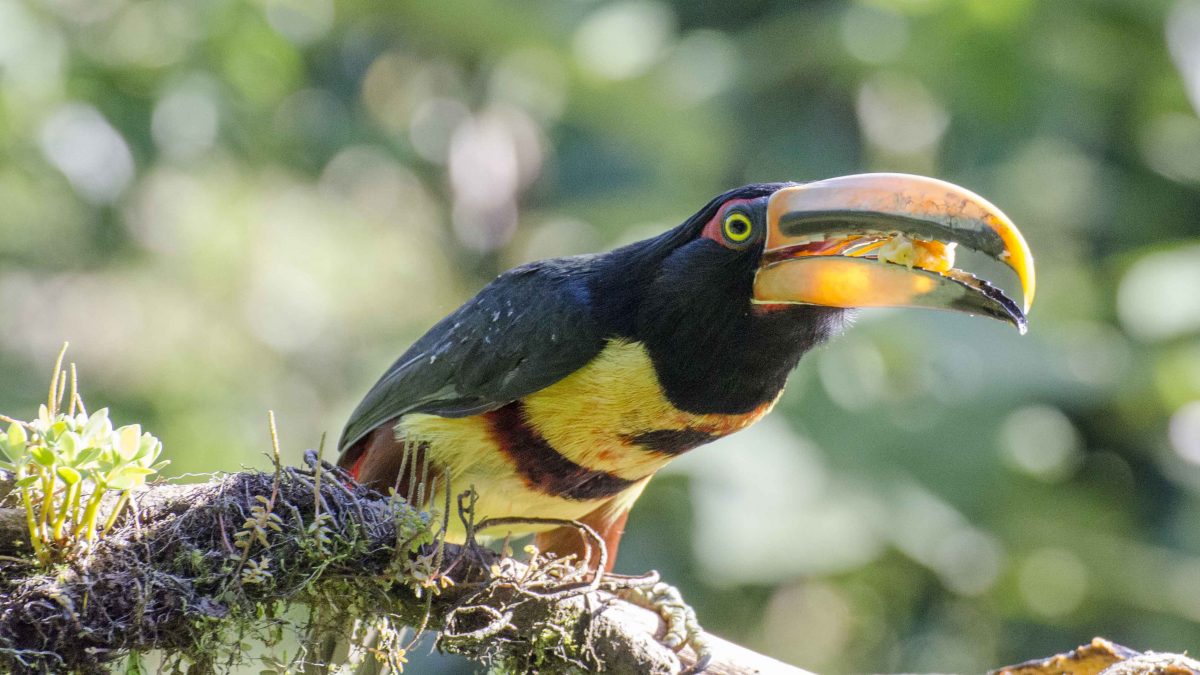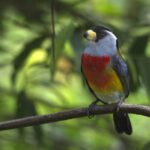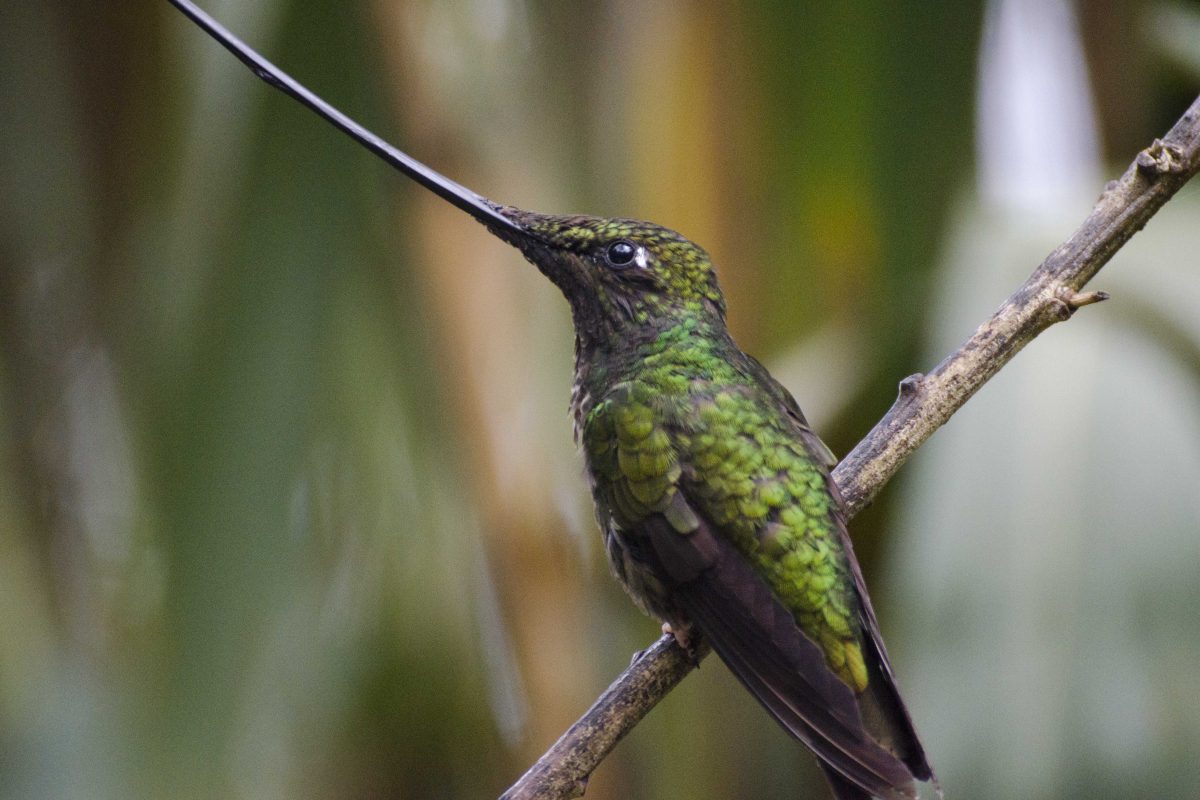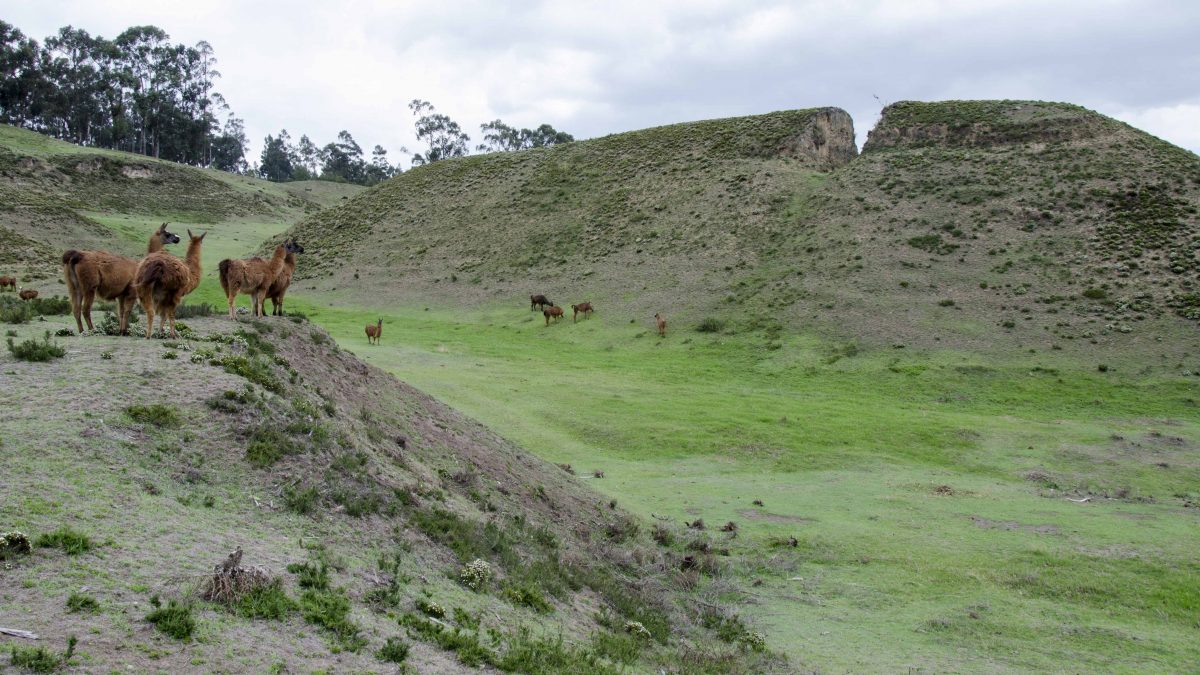With two visits to San Jorge de Milpe under my belt, it is time for me to share this hidden treasure of West Slope of the Ecuadorian Andes. There are beautiful birds that show up to the feeders, hiking trails through lush sub-tropical forests, pools and cascades in shady groves, and benches tucked into hidden corners for those that just want to sit and watch the world go by. Naturalists who love a little bit of everything will find this the perfect location for adventure, even if traveling without a guide. If you like the outdoors, this is a lodge you will want to add to your bucket list.
The lodge’s has long been known in birding circles. If you are a birder with a life list, we highly recommend requesting a local guide in conjunction with your trip… many of the birds in this location are rare and you will want to hedge your bets. Having a qualified guide who knows the habitat is essential.
SAN JORGE DE MILPE, THE LOCATION
San Jorge de Milpe is not much further than it’s more famous cousin, Mindo, but the terrain is completely different. While Mindo is Cloud Forest, Milpe is on the edge of the subtropical forest that runs from Colombia down into Peru and is a part of the Tumbes-Chocó-Magdalena Endemic Corridor. The small town of Milpe can be found just east of San Miguel de los Bancos.
While it is possible to see some of the same bird species as the higher altitude cloud forests, there are many different birds that thrive at this lower altitude.
SAN JORGE DE MILPE, THE LODGE
The lodge itself provides three levels for bird watching. The main level with a dining room overlooks sugar feeders for hummingbirds and plantain feeders for tanagers, aracari, and toucans. It is on what Americans would call the «second floor» but Ecuadorians call the first. This first level looks directly into the canopy of some of the lower trees.
From this main level, we have seen more than birds. We’ve also seen the weasel-like Tayra, a large dark mammal with huge claws and a bear shaped head, come to steal plantains for breakfast. It is an amazing experience to be eating your fried eggs, hear a scrambling sound coming up a tree, only to turn and see a very large animal snatch a plantain from the bird feeder right before your eyes. They’re fast and the only photos we have managed are on ground level as they slink in and out of the cover below. A more easily seen visitor is a Western Red Squirrel who runs up and down the different tree branches like they are his own personal highway. He, too, steals whole plantains outright. And the small, rodent-like agouti likes to eat grain placed within easy view of the far, back corner of this level. At night, the endangered White-eared Opossum often arrives for an evening snack, visiting each of the plantain feeders in turn.
San Jorge de Milpe, Second Level
The second level is officially the bar. There are several sitting areas with small tables making this is a perfect place to wind down after a long day of hiking. It is also my first stop in the early morning. Starting at about 6am, the birds flock to a huge tree that stands at the front corner of the lodge. The second level provides a direct view inside the canopy of this tree. The birds are looking for moths and other night insects that have been attracted by the light that stays on for the night. Once the early morning hours approach, the moths camouflage themselves on the tree branches and tree trunks or hide underneath the broad leaves of the tree or the bromeliads growing on its branches. By about 7am, it’s like a breakfast buffet for birds. Though dim light can make it tough to take photos, it isn’t impossible, especially if you use a high ISO setting to make up for the lack of light. Your final photos will be grainy and some birds may be a tad blurry, but identifying them will certainly be possible. It’s a great spot to see flycatchers, woodcreepers, and some tanagers. And to make this experience even better, the staff provides a hot drink bar for early risers. If you need that cup of coffee or tea before you snap your first photo, it’s there for you.
SAN JORGE DE MILPE, Top Floor
The third level is like secret hideaway. At the very top of the building, it looks over the vast reserve itself. In the far distance, it sometimes possible to see Andean mountain tops. Clouds dance between the foothills in the distance and the subtropical forest is laid out before you. This spot is wonderful for spotting birds that love the top of the canopy – bright colorful tanagers and song birds. But the view also makes it easier to spot parrots and toucans flying from tree to tree, raptors riding thermals high overhead, and the occasional hummingbird that is looking to perch in bright sunlight. This high point is my go to spot for pictures of sunrise and sunset. Neither are guaranteed in the subtropical forest – rainy weather can strike at just about any time of the year. But I have been blessed with beautiful views at least one morning and one evening on each of my visits.
I think the hardest part about visiting San Jorge de Milpe is actually deciding to leave the lodge itself and explore more than the birds that visit the lodge. There is so much to see just from the main building. But leave the lodge you must… future articles to come will tell you about the wonderful Cliff Lodge and Scientific Research Station, the trail system at San Jorge, and a small bird sanctuary just up the road from this special place.
Basic Info:
Contact San Jorge de Milpe with this form and be sure to mention Not Your Average American.
San Jorge de Milpe is located in Milpe. The brown information sign on the highway says San Pablo de Milpe. After passing that sign, look for the big blue sign near the bus top. It will have an arrow pointing to the right and directing you twoards the Ecoruta Milpe – Pachijal. If using WAZE, follow directions to San Miguel de los Bancos and look for the turn-off to Milpe just before the San Miguel de los Bancos.
San Jorge de Milpe Eco-Lodge
San Jorge de Milpe Research Lodgings
It is possible to stay at San Jorge in their original lodge which is a couple kilometers walk from the new main lodge.
Information For Your Trip
The road to Milpe is a two-lane highway of curvy roads. Be prepared for slow trucks, blind passing on curves, and pedestrians on the road itself as there are no sidewalks and this is a main thoroughfare connecting small towns.
- Direction by Car, use WAZE and look for San Jorge de Milpe Orchid and Bird Lodge, Pichincha
- Direction by Public Transportation While it is possible to arrive in Milpe by bus from Quito and then hire a taxi for the remaining drive, it is best to arrange for transportation with the Lodge upon making a reservation.





































